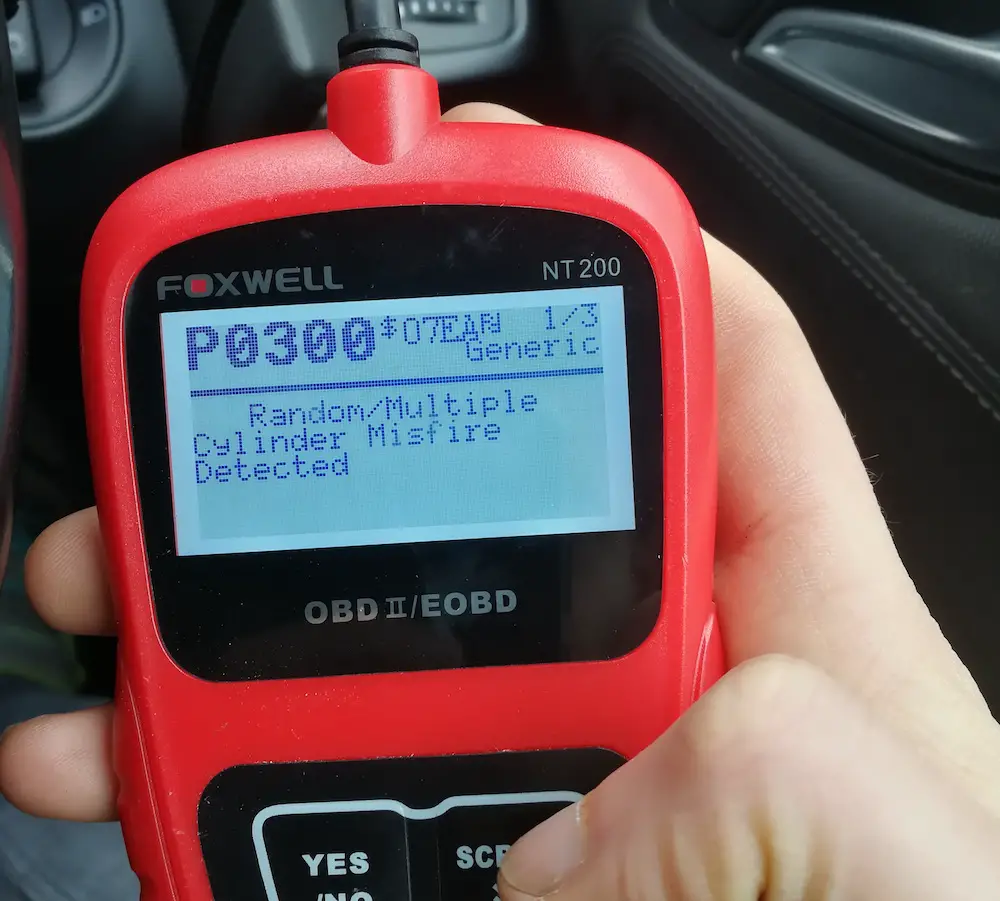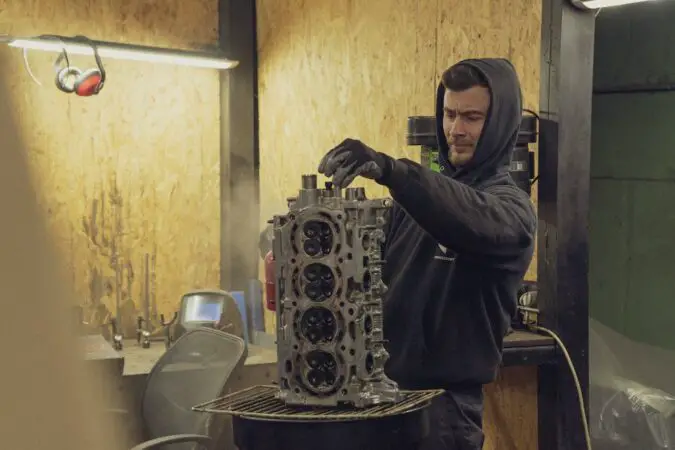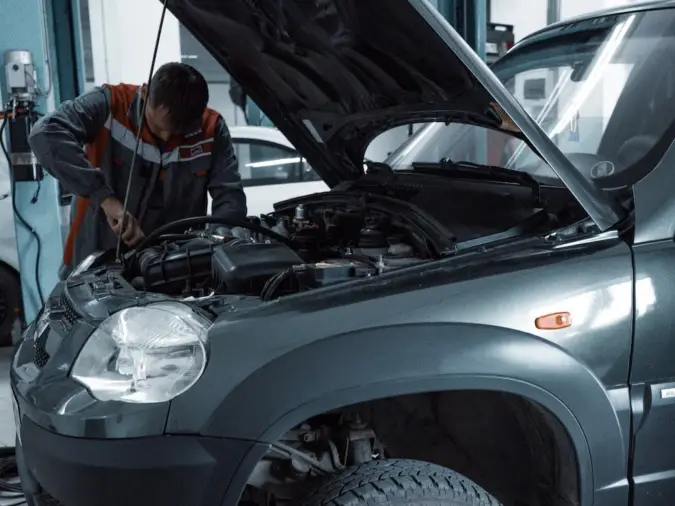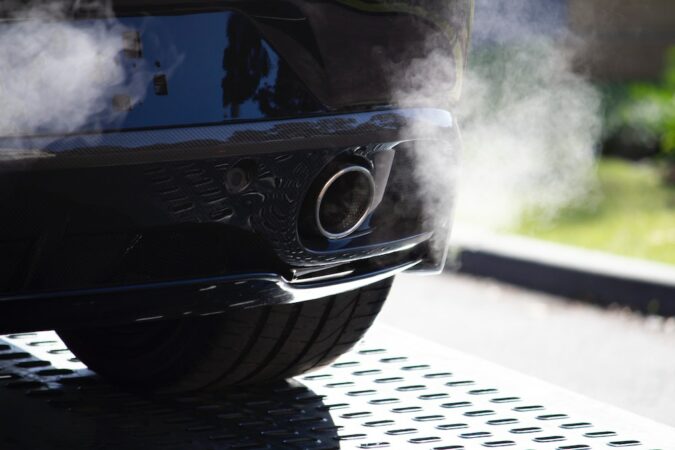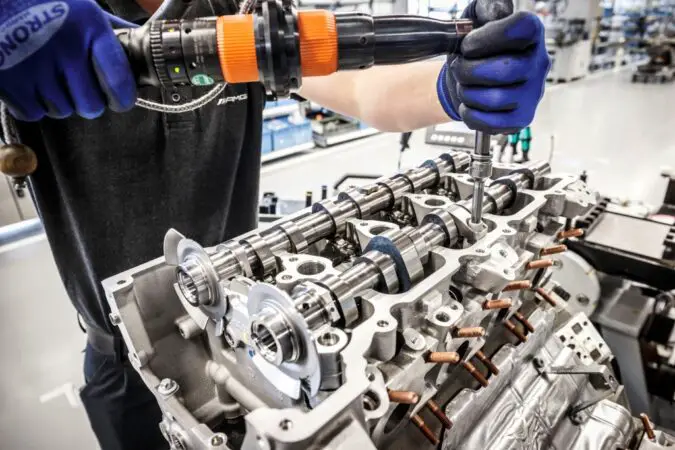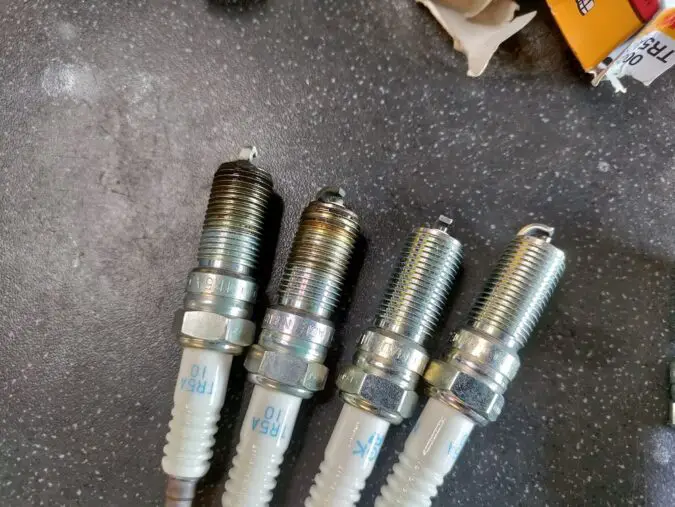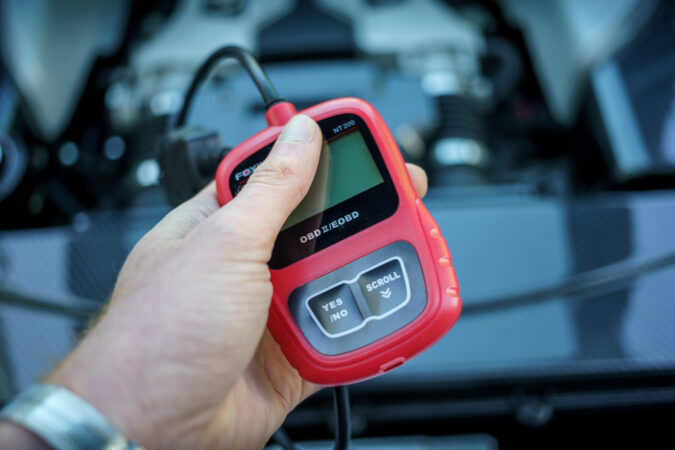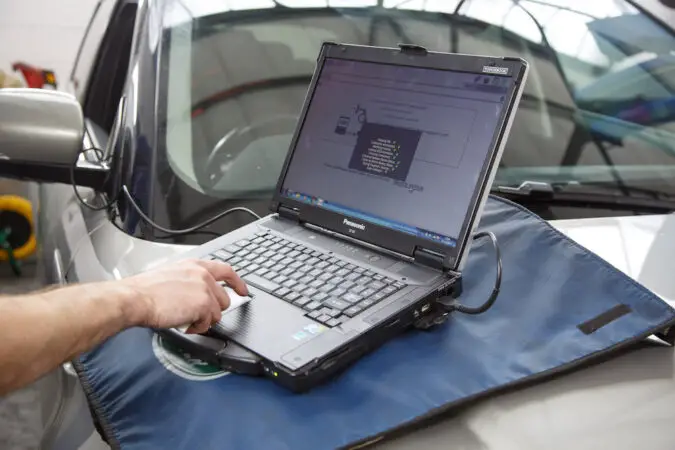An engine misfire occurs when one or more cylinders fail to generate power. There are a number of potential causes, including a fouled spark plug, a clogged fuel injector, or a broken oxygen sensor. This article will help you understand all about engine misfiring, misfire engine cost, and the process of repair elaborately.
Symptoms of an engine misfire include shaky acceleration or slower acceleration; the engine may also pause or momentarily lose power. The engine may run unevenly and vibrate more than usual at idling. Misfires can happen intermittently whether an engine is warm or cold. Read along to understand all about this issue and how to get it fixed.
Engine Misfire
An ideal ratio of fuel and air is necessary for the engine to function effectively, as is a powerful and clear spark. An engine misfire will result if any of these things go wrong since the combustion chamber won’t be properly ignited.
Typically, misfires result in the check engine light turning on. Unburned gasoline is likely to depart the engine, which will decrease fuel efficiency and perhaps raise pollutants.
Cylinder 1 Misfire
When the air-fuel mixture in cylinder number one fails to ignite, it is referred to as a cylinder 1 misfire. Let’s examine how an engine operates in order to comprehend them. An engine has several cylinders (generally between three and eight on most cars). The pistons travel up and down inside the cylinders. The crankshaft, which turns the wheels, is attached to the pistons.
Through intake valves, the air-fuel mixture is introduced to the cylinders. After that, the piston compresses the mixture and a spark plug ignites it. The piston descends as a result of the expanding gases, turning the crankshaft.
A misfired cylinder occurs when either the spark plug or the air-fuel mixture failed to ignite. This indicates that the piston did not descend, which prevented the crankshaft from turning.
Any cylinder has the potential to misfire, but cylinder one has the highest probability of doing so. This is so because cylinder number one is typically at the front and cylinders are numbered from front to rear.
Cylinder 4 Misfire
Your mechanic’s OBD2 diagnostic scanner is displaying error code P0304 when they refer to a cylinder 4 misfire or a 4-cylinder misfire. When this happens, the ECU of your car usually discovers a misfire in cylinder 4.
Your mechanic needs to find the source of the P0304 code as quickly as possible. Because it can have an impact on how your car performs and drives. It can be difficult to pinpoint the particular issue, and there is no quick treatment. In order to rule out and identify the likely reason, other problems that your car is displaying must be taken into account.
Engine Misfire Causes
It’s critical to identify the root cause of an engine misfire and address it as quickly as feasible. Misfires can result in a variety of issues, ranging from decreased fuel efficiency to total engine failure. But how can you determine whether your engine is misfiring and what can be the reason?
There are a number of potential defects that might lead to engine misfires, but some possibilities are more common than others. Spark or fuel are the main bad guys, and they typically show up in spark plugs, plug wires, coils, or the fuel delivery system.
Other, more serious causes include computer or wiring issues or breaks in the rotating mass (pistons, rods, and crank bearings). Malfunctions with the valves or heads, problems with cooling that may lead to overheating, and any number of pushed gaskets could also be the culprits.
The majority of the dangerous stuff is infrequent and, more crucially, was likely brought on by your failure to solve minor issues with the ignition or injection. Let’s look at the various areas that might malfunction and cause a misfire in detail-
Misfire Engine Cost, Causes #1: Ignition System
Most people think of worn-out spark plugs when they hear the term “misfire.” They are unaware that the ignition system’s spark plugs are merely one component. The crankshaft position sensor, coil packs, wiring, and, of course, the spark plugs are just a few of the parts that make up a modern ignition system. It could result in a misfire if any of these components malfunction.
Misfire Engine Cost, Causes #2: Air And Fuel Delivery Systems
Inside the engine, air and gasoline combine, and the spark plug ignites the resulting mixture. The engine is set in motion by the explosion, producing the rotational power required to move your car forward. A misfire can be brought on by any problem that alters the air/fuel mixture, from a broken fuel injector to a vacuum leak.
Misfire Engine Cost, Causes #3: Emissions System
Modern vehicles come equipped with a variety of emissions control systems (for more context, check out our write-up on do all cars have a catalytic converter) and modules that help reduce the amount of pollution emitted into the atmosphere. The positive crankcase ventilation (PCV) system and the exhaust gas recirculation (EGR) system are two examples. In some circumstances, problems with emissions equipment might change the engine’s air/fuel ratio to the point where it results in a misfire.
Misfire Engine Cost, Causes #4: Sensors And Modules
The PCM (Powertrain Control Module) uses a large number of the sensors used in modern vehicles to manage important processes like fuel delivery and spark timing. Such sensor issues can very easily cause an engine to misfire. Despite being quite uncommon, a misfire can also be brought on by a fault with the PCM.
Misfire Engine Cost, Causes #5: Control Circuit
Electrical circuits are used to connect all of the input and output engine management components when necessary. These include various sensors and ignition coil packs. An engine misfire can be brought on by issues with these circuits, such as faulty wiring or a loose connection.
Misfire Engine Cost, Causes #6: Engine Mechanicals
Additionally, a lot of individuals are unaware that a mechanical issue with the engine might result in a misfire. To ensure complete combustion, the air/fuel mixture must be compressed within each of the engine’s cylinders.
In order to generate sufficient compression, the cylinder must remain entirely shut off while the piston is traveling upward. Internal engine issues might make it difficult for the cylinder to properly seal, which results in a loss of compression and an engine misfire.
1. Engine Compression Issues
The process through which the mixture of gasoline and air is compressed in the cylinders is called compression. The piston, rings, and valves are only a few of the components that make up the compression system. A loss of compression may result from damage to any of these components.
2. Piston
The component of the engine that goes up and down is the piston. Because it will allow the air-fuel combination to escape from the cylinder, a hole in the piston can result in a misfire. This may occur if the piston develops a crack or if the piston rings develop a hole.
3. Valve Seals
Oil and other fluids cannot enter the cylinders thanks to valve seals. They may deteriorate with use and permit oil to enter the cylinders. When this occurs, a misfire could result.
4. Cylinder Heads
The area of the engine where the cylinders are mounted is called the cylinder head. A cylinder head issue may result in a misfire since it may prevent the air-fuel combination from reaching the cylinders.
Engine Misfire Symptoms
Paying attention while you drive is the greatest approach to determining if you are suffering an engine misfire. When your engine misfires, it feels like it abruptly lacks power. When you try to accelerate the car, you can feel some hesitation. An engine misfire could be the reason why your car accelerates more slowly than usual or feels rough.
Excessive vibrations are another thing you’ll probably notice when your engine misfires. Because misfires are infrequent, your car will typically operate without a problem. However, if you occasionally notice a drop in power, causing loud vibrations or a jerking motion within the car, a cylinder misfire is probably to blame.
Engine misfires also produce a distinctive sound. Instead of from within the car, you’ll hear it coming from the engine or the exhaust. There could be a loud popping or pounding noise that stops after the misfire. In general, even if you don’t hear the loud popping, if your car sounds like it’s having trouble, you might have an engine misfire issue.
A misfiring engine can also emit an unpleasant odor that is reminiscent of gasoline but is actually a mixture of coolant and engine oil. If you do detect a specific odor, cracked cylinder walls may be to blame.
The internal components may rotate unevenly as a result of the loss of power, which is frequently brought on by the engine’s vibration, leading to needless wear and tear. Large black smoke clouds emerging from the exhaust could also potentially be an urgent warning indicator.
Cylinder Misfire Fix
Even though it might be too late, an engine misfire can be avoided if you carry out the recommended maintenance listed in your manual. To assist you to find any potential future issues, keep the engine tuned to the manufacturer’s specifications.
To avoid issues in the future, any indication of a misfire needs to be fixed right away. Waiting too long may result in an unexpectedly large repair expense.
A fractured piston ring, a burnt-out valve, a broken valve spring, a worn-out camshaft, or a malfunctioning fuel injector are among the common causes of an engine misfiring. The mechanic will initially use a code reader for car to identify the problem before making a diagnosis.
Then, if the spark plug appears to be the problem, they would run the engine at idle speed. This is to examine whether the spark plug can withstand the load before disconnecting the coil pack’s leads to determine which wire might be at fault.
Injectors will be extensively inspected to see whether they need to be replaced if the ignition and spark plugs weren’t the problem. The mechanic will measure the resistance with a multimeter to get the Ohms value. They might need to be replaced if they are read beyond the range of the set values.
Last but not least, the fuel pump may frequently be at fault for an engine misfire. An easy way to do this is to check the fuel pressure.
Engine Misfire Repair Cost
An issue with the ignition system, fuel injectors, or compression is typically what causes a misfire. A broken engine valve or a leaking head gasket are some potential causes of misfires.
With so many factors at play, you could spend as little as $100 to fix broken spark plugs or as much as $500 to fix an engine valve issue. You might even end up spending an awful lot more if it’s due to a more serious issue such as a broken piston ring.
To demonstrate to you just what repairs could be necessary to address the misfire situation, we made a table. As you can see, depending on the causes of the misfire in the first place, the expenses can differ significantly.
- Faulty fuel delivery – $200 to $1,000 or more, depending on the reason for the bad fuel delivery
- Bad spark plug wires – $100 to $300
- Broken piston rings – $1,500 to $3,000
- Broken valve springs – $450 to $650
- Carbon or oil-fouled spark plugs – $100 to $250, depending on the costs of the plugs and labor rates
- Faulty ignition coil – $150 to $250
- Fuel injector – $275 to $400
- Vacuum leak – $200 to $800
Misfire Engine Cost: How Long To Repair An Engine Misfire
Depending on the reason for the issue, fixing a cylinder misfire can take either a few minutes or several hours. For instance, if a hole in the piston is to blame for the cylinder misfire, this is a serious issue that can only be resolved by completely replacing the engine, a task that will take hours to perform.
On the other hand, it will just take a few minutes if the misfire was caused by a defective spark plug. Therefore, the difficulty of the problem’s solution will depend on its root cause. However, the majority of cylinder misfire causes are typically complicated and require the assistance of a skilled and knowledgeable mechanic to be corrected.
Average Cost To Replace Spark Plugs
Your first warning can come if the engine doesn’t seem to start straight away. If the engine hesitates or doesn’t have the same pull when accelerating, that could also be a symptom. Another telltale indicator is increased fuel usage associated with rough idling and engine misfires. These signs—some or all—indicate that it’s time to replace your spark plugs.
Typically, spark plugs cost less than $10 each. The price is determined by the electrode’s material and its anticipated life. The most expensive plugs use laser technology and can cost up to $25 each. They have platinum or iridium tips – you can find out more in our guide on whether are all spark plugs the same.
Depending on the type of spark plugs you require and the number of cylinders in your engine, the cost of a set of spark plugs can range from $16 to $100. It also helps to keep in mind that some specialist engines employ two spark plugs per cylinder when determining the cost.
Spark Plug Wires
When you purchase new spark plugs (and if you want to learn how to remove and install new spark plugs and changing spark plugs), you need also to replace the spark plug wires. That might be every 30,000–40,000 miles or so with regular spark plugs. If your car has extended-life spark plugs, you might be able to go up to 100,000 miles without replacing the plug wires.
Since some cables are produced from a soy-based polymer that is a favorite food for rats, it’s still a good idea to frequently check the wires for any frays, cracks, and even bites (yes, biting!).
Changing Interval Of Spark Plugs
Spark plug replacement (with some insight into how many spark plugs in a V8) was previously advised by specialists every 30,000 miles or so. The life expectancy of today’s extended-life spark plugs can reach 100,000 miles. Typically, the routine maintenance interval for your vehicle includes checking and changing the spark plugs. It is uncommon to need to schedule a visit merely for the spark plugs.
For further information, consult your Owner’s Manual. You might even consider learning how to replace the spark plugs.
Driving With A Misfiring Cylinder
Theoretically, a car with a misfiring cylinder might be driven for thousands of miles. The engine’s other cylinders will keep producing power thus enabling it to be driven. The car will therefore continue to operate even though you may tremble and stall along the wall (and not experience much in the way of speed or acceleration).
Nevertheless, you shouldn’t go any further than necessary in an automobile that has a misfiring cylinder. When a misfire is detected, most modern cars may enter “limp mode,” reducing their top speeds and making them uncomfortable to drive. As a result, you can continue to drive when a cylinder is misfiring.
Also, it can be dangerous to drive around with a misfiring cylinder. First of all, if a second cylinder fails as well, you could completely lose engine power. If it occurs while you are not expecting it, this could result in mishaps.
Over time, misfires can potentially harm an engine. The gasoline in the chamber is not burning properly when you get misfires. It follows that fuel enters the catalytic converter and raises its temperature, possibly resulting in damage. Additionally, it may create warping in the valves and pistons or harm the pistons and cylinders.
Hence, the ideal response is that you should only take it as far as a repair shop or a secure location to stop, then make any necessary repairs before continuing.
Diagnosing Misfire
Diagnostic Trouble Codes (DTCs)
When you bring in a car with a misfire, one of the first things your mechanic will do is look for Diagnostic Trouble Codes (DTCs). These codes are can be used to identify what is causing an engine to misfire, but they won’t directly tell the mechanic what is wrong with the car.
An engine misfire code may signify that the engine is running lean or that there is an issue with a particular cylinder. Depending on the diagnostic instrument being used, it can display the engine RPM at the time of the misfire or the number of misfires that happened within a specific number of cycles.
However, not all misfires will result in a DTC being registered, especially if the misfire is sporadic. The following codes may indicate a potential misfire:
- P0100 – P0104: Mass airflow sensor
- P0171 – P0172: Lean or rich fuel mixture
- P0200 – Fuel injector circuit malfunction
- P0300 – Random misfire that is not isolated to one or two cylinders.
- P0301 – Misfire in cylinder 1
- P0302 – Misfire in cylinder 2
- P0303 – Misfire in cylinder 3
- P0304 – Misfire in cylinder 4
In general, the first digits in the P03XX series of OBD codes should indicate a misfire, with XX running from 01 to 12. Thus, letting you know that cylinders #1 through to #12 has a misfire. To find out more, you can check out our guide on the P0171 Toyota or a P0171 Nissan code.
Diagnostics
If there aren’t any codes displayed, mechanics start by checking the spark plugs to see if there is any damage. Black marks on the spark plug or if it’s damp are indicators of damage. The problem could be resolved by replacing the spark plug if it seems damaged or if it is merely old.
A compression test is usually the next action mechanics take. This examines the functionality of your air, fuel, and spark systems. They accomplish this by starting the car and placing a compression gauge into one of the spark plug positions. The outcome of the test is then used by the mechanic to assess whether the problem is caused by compression.
If so, the mechanic might make a fix, like changing the head gasket. It’s usually preferable to leave replacing the head gasket to expert technicians at the local mechanic because it’s a significant task.
Finally, if there are no compression problems, the coil pack can be the culprit. Mechanics test the coil pack using a multimeter to see if the coil is still functioning properly. To determine whether the coil pack needs to be replaced, they compare the resistance they find on the multimeter to the typical resistance for that model of vehicle.
Misfire Engine Cost: Conclusion
In conclusion, if you think your engine might be misfiring, schedule a visit with a mechanic or your dealership right away to have your car checked out, repaired, and to stop future damage. To help your technician diagnose the issue, gather as much information as you can before calling to schedule an appointment, including any unusual sounds.
Keep a tight eye on your vehicle’s behavior while you drive. Make a note of any odd sounds, and the conditions the engine is misfiring in such as whether it happens right away after the car starts, whether it happens during acceleration or at idle.
Also, keep a note of the frequency with which you observe the misfire happening. Your mechanic will have an easier time determining the source of the misfire the more details you can provide. Misfires shouldn’t be disregarded, even if they only occur sometimes, as they are a blatant indication that something has to be fixed or replaced. If not fixed, they might do further harm.
FAQs On Misfire Engine Cost
How To Fix Engine Misfire
Depending on what caused the misfire in the first place. A misfire could start in one or more systems where aging or failing components are present. Even for seasoned mechanics, misfires can occasionally be challenging to diagnose, particularly intermittent misfires.
What Is A Misfire
Engine misfire happens when one or more of your car’s cylinders fail to deliver power, with the potential for unburned gasoline to enter the catalytic converter. To avoid costly repairs and a potential automobile fire, you should consider this to be a serious situation and have it fixed right away. Damage will increase the longer you ignore it.
What Causes A Misfire
The most common reasons for a misfire include faulty ignition coils, carbon tracking, worn, incorrectly installed, or mishandled spark plugs, as well as defective spark plug wires and vacuum leaks.
How To Tell If A Spark Plug Is Misfiring
To remove the plug and have a good look at it, use a spark plug socket. You can identify the misfire’s cause with the aid of the damage you observe. Disconnect the plug wire leading to the misfiring cylinder’s spark plug once you’ve identified it. If the spark plug is simply worn out, replacing it can fix the issue.
Can Bad Gas Cause A Misfire
A misfire may result from a tank of “bad gas” (old or wrong octane fuel). The improper air/fuel ratio can be caused by weak or dirty fuel injectors that impede the flow of fuel into the cylinder. Low fuel pressure from a clogged fuel filter might also reduce fuel flow.
What Does A Misfire Sound Like
The engine will create a loud popping noise or a quick blast during a misfire, which is frequently referred to as backfiring. Unburned fuel that is released from one cylinder during the exhaust stroke is ignited by the spark from the next cylinder causing a backfire.
Can A Bad Battery Cause A Misfire
Simply said, a low car battery might cause the gasoline pump to operate more slowly. This issue may also result in “lean gasoline.” A faulty battery can also result in some injectors not opening properly. The combination of all of these circumstances may result in the engine misfiring.
Can You Drive With A Misfire
Although it is still possible to drive a car with a misfire, it is not recommended. A misfire could indicate a number of various engine problems. The damage to your engine could get worse over time if you keep driving without addressing the problem that initially led to the misfire.

